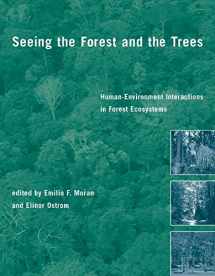
Seeing the Forest and the Trees: Human-Environment Interactions in Forest Ecosystems
Book details
Summary
Description
Throughout much of human history, changes to forest ecosystems have come about through natural climatic changes occurring over long periods of time. But scientists now find changes in forest cover dramatically accelerated by such human activities as large-scale agriculture, the building of dams and roads, and the growth of cities with vast areas of asphalt. Changes that once took centuries now take only decades. Seeing the Forest and the Trees examines changes in land cover and land use in forested regions as major contributors to global environmental change. It investigates why some forested areas thrive even in the presence of high human densities and activity while others decline and disappear. The book brings together findings from an ongoing, large-scale, multidisciplinary research project undertaken by anthropologists, geographers, economists, sociologists, political scientists, environmental scientists, and biologists in more than twelve countries at over eighty locations. After addressing theory and methodology, including chapters on satellite remote sensing, geographic information systems, and modeling of land-cover change, the book presents case studies that compare data across sites and across temporal and spatial scales. It contributes to Human Dimensions in Global Change research and proposes new directions for this area of study.


We would LOVE it if you could help us and other readers by reviewing the book
Book review



